The Alton and Lydia Lim Center for Science, Technology and Health — which opened in January 2018 as the largest academic building on Biola’s campus — began with a challenging vision: Design the most innovative, inspiring space possible for exceptional Christian students who want to pursue careers in the sciences.
From there, Biola assembled a team of scientists, technology leaders, health care professionals and architects, who worked to create excellent research laboratories, classrooms, technology and collaborative spaces. Then, the university community prayed for God’s provision through hundreds of generous supporters — and he provided more than $57 million to make the building a reality and fill it with remarkable technology.
The result is a 91,200-square-foot facility that offers students access to extraordinary opportunities to learn, experiment and develop expertise. Named after Alton Lim, who provided a $12 million gift toward the building’s construction, the Lim Center is a space that inspires Biolans to make discoveries, pursue truth, solve problems and serve people. All to the glory of God.
Lab Spaces
Throughout the Lim Center, you’ll find 24 instructional laboratories where students can get hands-on experience. Unlike Biola’s former home for sciences, Bardwell Hall, where labs often served multiple disciplines, each laboratory in the Lim Center was designed and customized with a specific discipline in mind — ranging from molecular biology to botany to biochemistry and more. In the organic chemistry lab, there are over 20 workstations with fume hoods (compare with just two in Bardwell), allowing students to safely experiment with many kinds of chemical reactions in labs and in research.
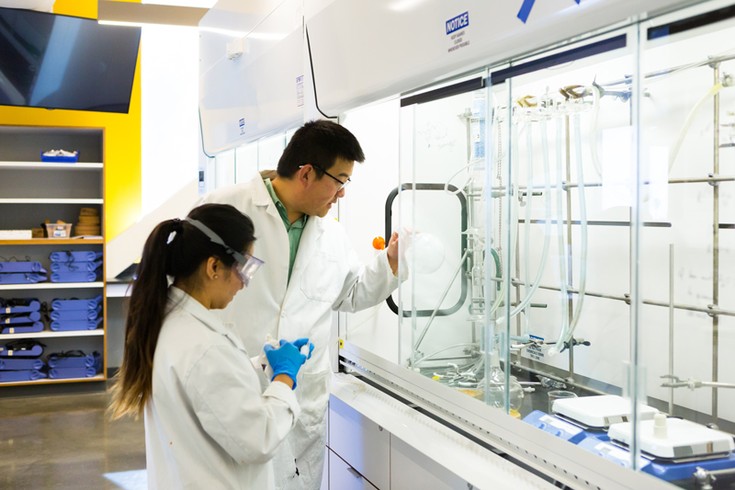
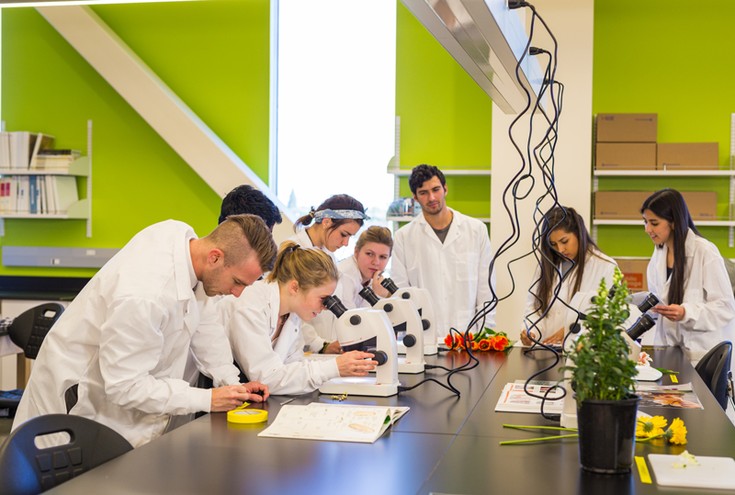
Nursing Suite
The nursing simulation and skills suite on the lower level of the Lim Center was designed to resemble the real hospital wards graduates will encounter in their careers. The space features a maternity ward, intensive care unit and internal medicine area where students can get training and develop the practical skills needed before taking part in clinical experiences. They’re even able to simulate real-life scenarios with life-like manikins — which can speak, bleed and even give birth — while professors watch through a one-way observation mirror.
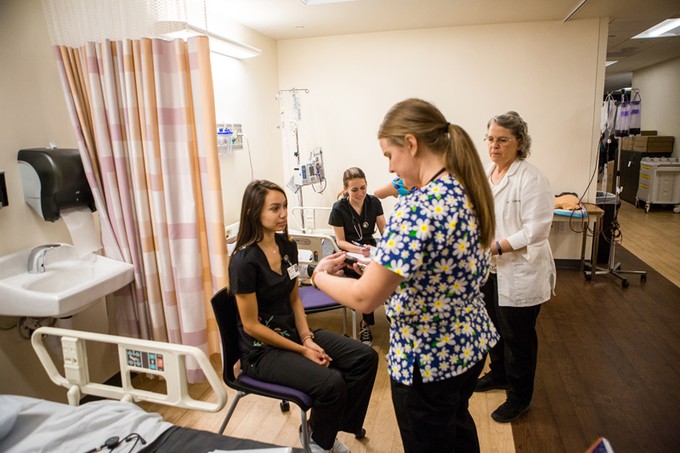
Research Opportunities

In addition to instructional labs, the Lim Center also features several dedicated faculty research labs, where students are able to work closely with professors on a number of cutting-edge projects — such as genetic research on drosophila (fruit flies) with professor Behzad Varamini or zebrafish with professor Hyuna Lee. Research is a central component of the new Stewart Science Honors Program — a unique opportunity for a small cohort of exceptional students who participate in a paid on-campus research internship and produce a senior capstone project that is presented or published at a national conference or peer-reviewed journal.
Collaborative Areas
The Lim Center is filled with communal areas where students can study, work on group projects or relax between classes. Whiteboard walls throughout the building allow anyone with a dry-erase marker to work on math formulas, write notes, draw molecular structures or scrawl a science pun.
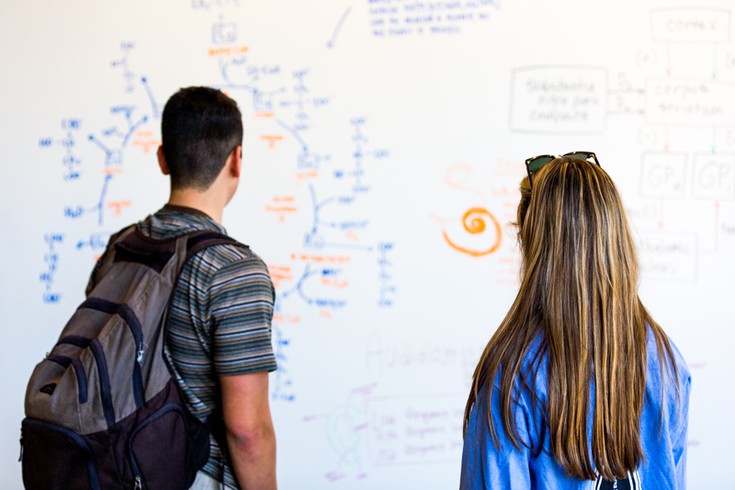
Anatomy Suite
The anatomy suite, one of about 20 workspaces devoted specifically to different disciplines of the biological sciences, allows students to study the complex design of the human body. The suite also features an innovative 3D surgical camera — technology that Biola is among the first universities in the nation to incorporate — which students can use as they examine biological specimens.
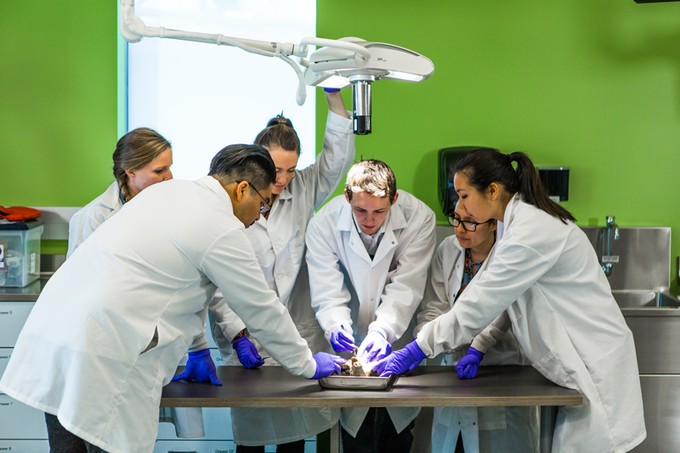
Applied Physiology Lab
In the applied physiology lab, kinesiology students receive specialized training in human movement and athletic performance. Using the lab’s new equipment — including a hydrostatic weighing tank — students are able to measure body mass, VO2 max and heart rate, and directly apply what they’re learning in class.
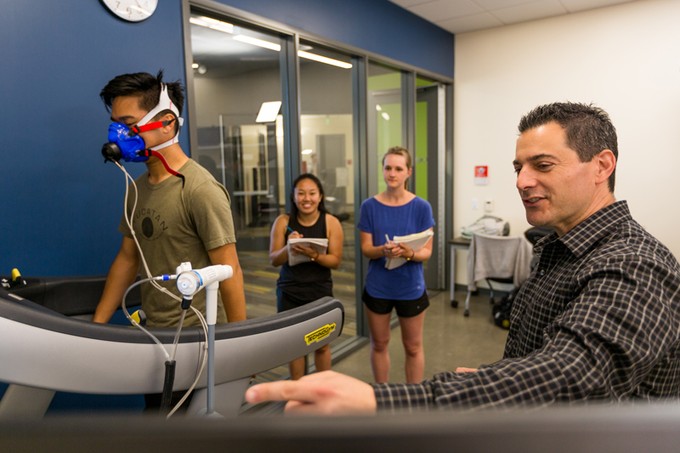
A ‘Fab’ Space for Creating
The Lim Center is a dream come true for engineering and physics students — particularly the advanced physics laboratory and the innovative “fab lab” (short for fabrication laboratory). Featuring lasers and 3D printers, the spaces are filled with specialized tools, so students not only know how to design something in concept, but also how to build and test it in the real world.
Equipment
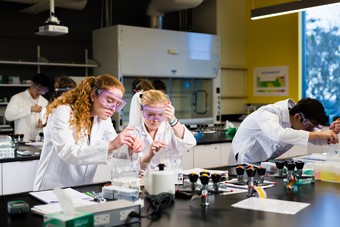
As they’re conducting experiments, students have access to over $4 million of brand new, high-tech equipment. A scanning electron microscope gives them the power to see 3D images down to the individual cellular level. The new Nuclear Magnetic Resonance (NMR) spectroscopy lab allows them to determine the exact identity of chemical structures. And the dedicated genetics laboratory contains the equipment needed to analyze nucleic acids and to quantify changes in gene expression with quantitative PCR.
Splashes of Color
One of the ways to know where you are within the massive building is by looking at the walls. The vibrant colors help to specify which spaces are used by which disciplines: purple for nursing; light blue for math and computer science; deep blue for kinesiology and health science; lime green for biological sciences; yellow for chemistry, physics and engineering; and burnt orange for general spaces.
Graphic Walls
The Lim Center is a place where science and faith flourish together — a fact that’s reinforced on several display walls throughout the building that feature Scriptures written alongside scientific imagery, or inspiring quotes from influential Christian scientists of the past.
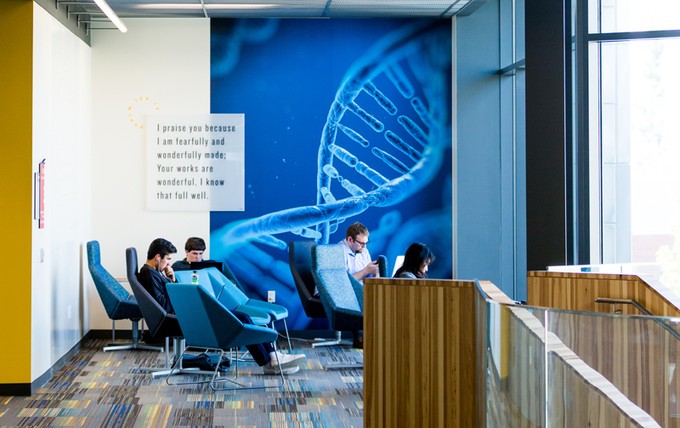
A Statement-Making Staircase
One of the signature elements in the Lim Center is the wood-lined staircase that connects its four floors. Visible through the building’s window-sided exterior, the geometric wonder was assembled puzzle-like by a skilled team of millworkers.
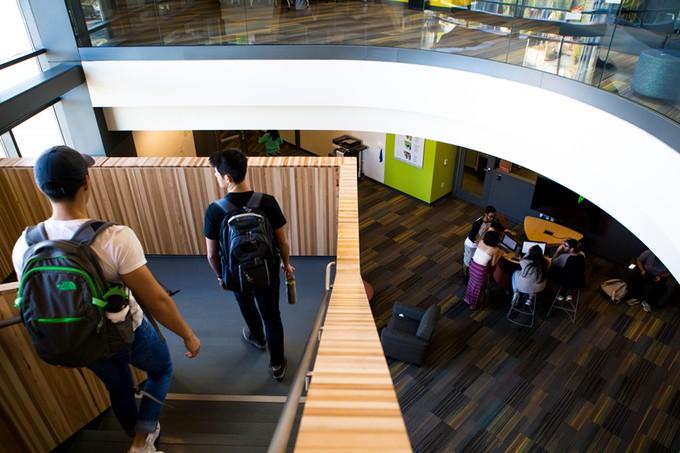
Cutting-Edge Classrooms
Though most of the building is dedicated to lab spaces and offices, the Lim Center also includes four classrooms for lecture-based courses. Each features mobile desks that glide easily around the room — allowing neatly arranged rows to become more fluid and amoeba-like during collaborative exercises and class discussions.
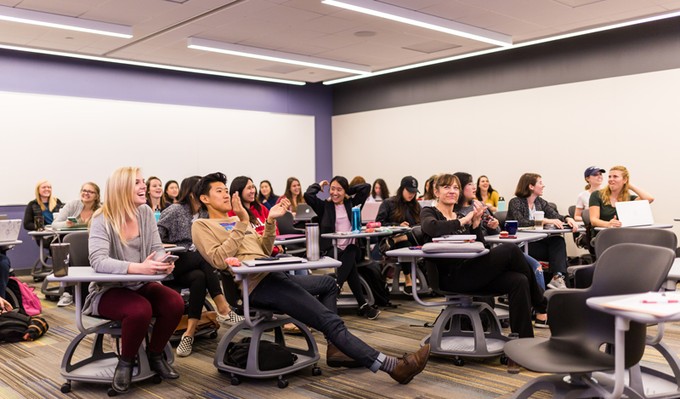
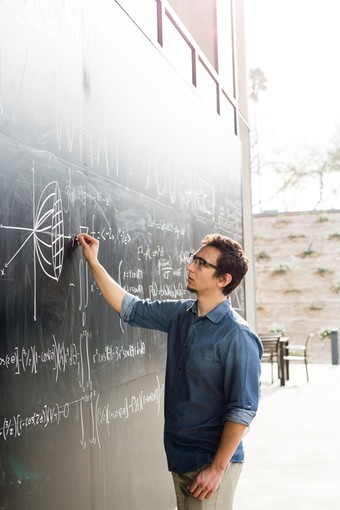
Great Outdoors
On the lower level, students can get some fresh air in an outdoor courtyard that features a massive chalkboard wall. Meanwhile, near the top of the building, several additional features are still on their way — including a rooftop observatory, a greenhouse terrace and solar panels to help provide energy.
SUPPORT THE SCIENCES AT BIOLA
The construction of the Lim Center has been fully funded with nearly $57 million of generous investment. However, an additional $7 million is needed for an endowment to fund its ongoing operations, supplies and maintenance into the future.
To support this project, visit giving.biola.edu/priorities/science-center.
Online Photo Credits: Ethan Alloway, Natanael Cho, Jeremy Hubin, Daniel Robinson, Cameron Vurbeff
 Biola University
Biola University
.jpg)

